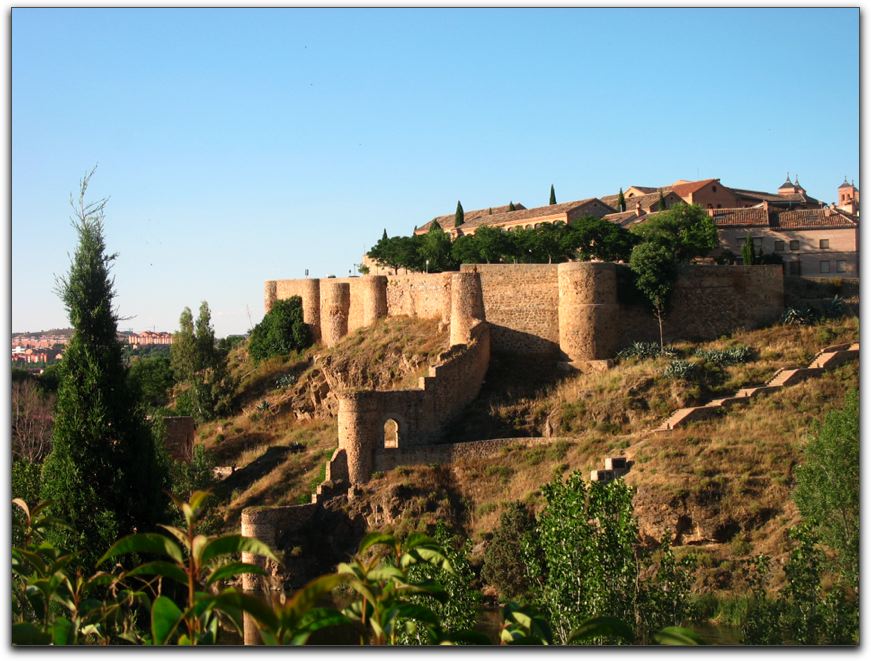
The drive from Ávila to Toledo was mostly along a two-lane road. It went through pine forests and olive groves, over some beautiful mountains covered with yellow flowers and around a brilliant blue reservoir/lake with what seemed to be resort homes along its edge.

Our campsite in Toledo: “Camping El Greco” was a two kilometer walk from south-west of the old walled city. Not quite sure how to go, we managed to find our way to the picturesque Puente de San Martin.

We walked across the old stone bridge over the Tagus river
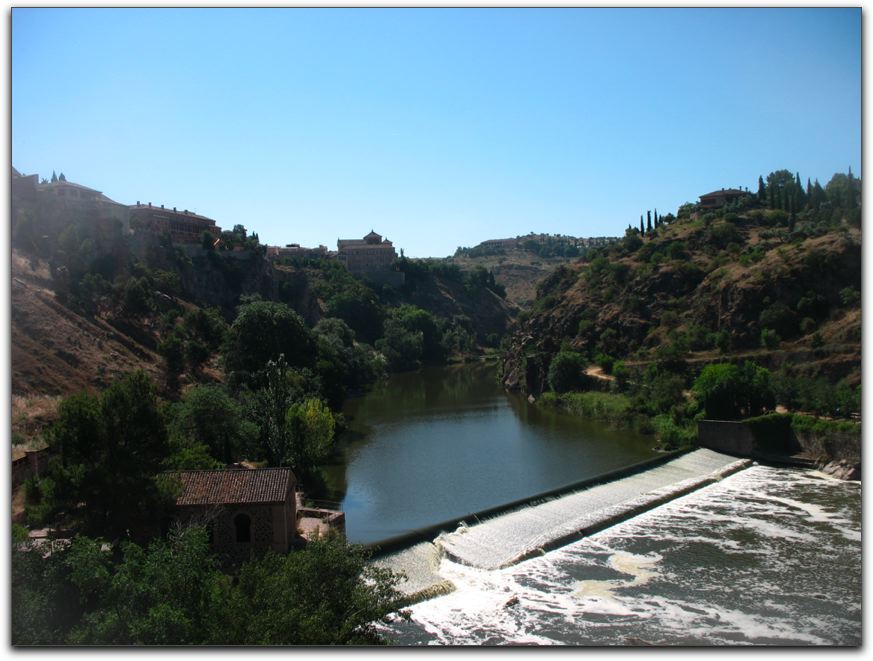
and entered the town directly past Monasterio de San Juan de los Reyes.
We see the strangest things while traveling. Mark doubts he's ever seen a bucket of Philadelphia cream cheese this big in the States. Here it was in use with soapy water for washing the floor.

But even stranger: “Kookoo Rikoo!” is what roosters say in Hebrew (instead of “Cockadoodle Doo!”)
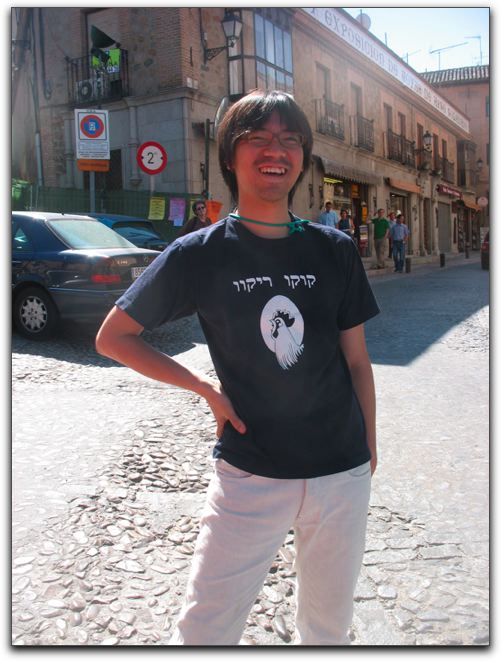
This fellow bought his shirt in Japan. He and his girlfriend had no idea what the shirt said. They don't know any Hebrew. They were particularly happy when Mark explained to them what the phrase on the back meant.
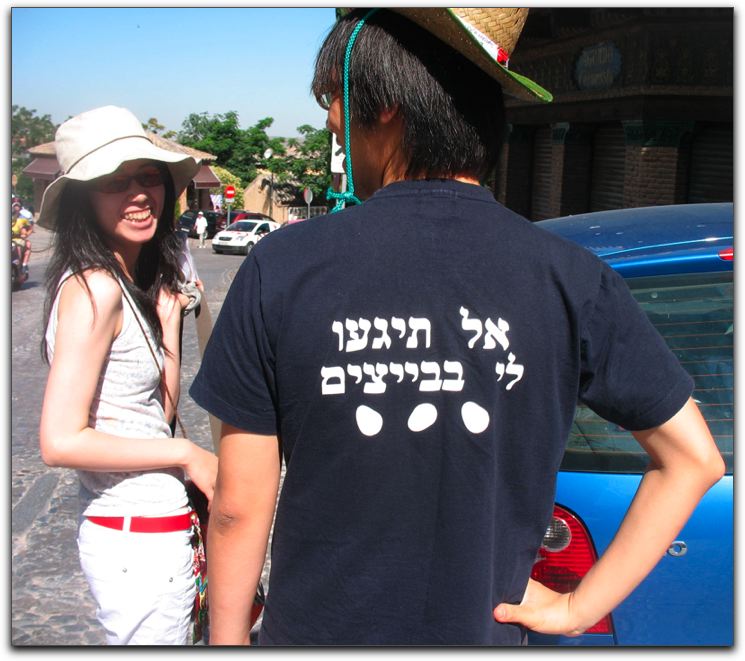
The literal meaning is “Don't touch my eggs”. However, the double-entendre is fairly universal.
We had entered Toledo barely three blocks away from the Judería. The model from the Museo Sefardi shows early medieval Toledo. The arrow points to the bridge we had crossed and the built-up portion of the model in the oval is the area of the Judería. The large complex further to the right in the shape of a cross (if you look closely) is the Cathedral.

At the top of the street in the next photograph (behind us and on the right) is a Judaica bookstore that is run by people who believe they are descended from Conversos. The store is similar to those we found in Segovia and Girona. However, it is more committed to “helping” those who “find” their “true, or original, Jewish selves” a way back to Judaism. It has a wide selection of books, CDs and newspapers and even some good maps that explain the Jewish aspects of Toledo.
The streets of the Judería are well maintained. The Judería is, after all, one of the prime tourist attractions of the city.
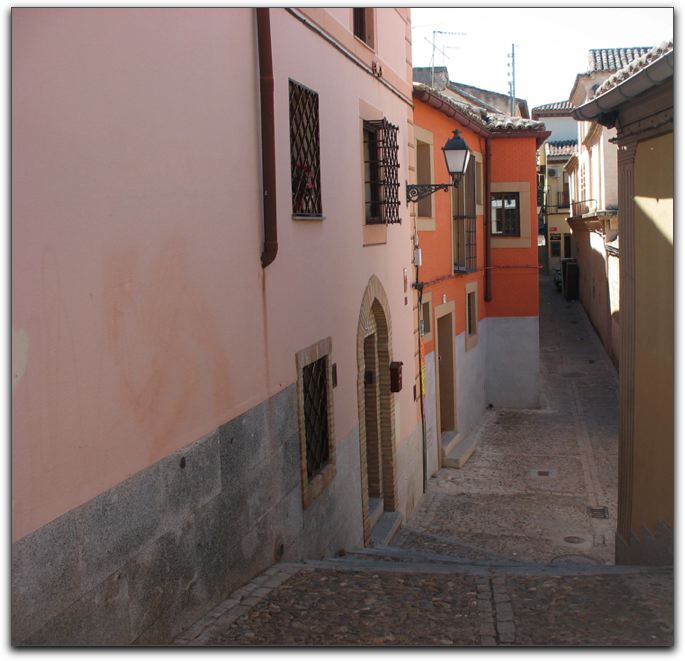
Even so, there are some disturbing signs there:
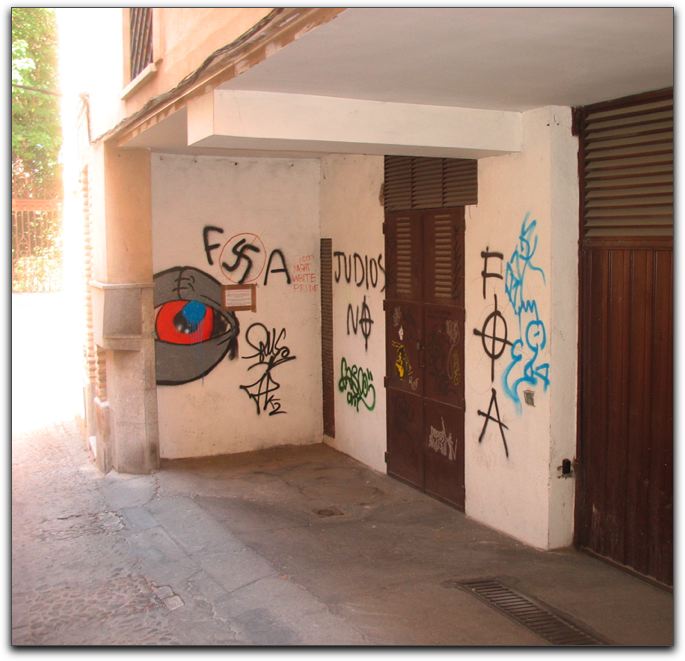
As we approached the synagogues we encountered an Israeli group as it entered the St. Maria la Blanca Synagogue. This is an intimate space that holds about 100 people. The white offers a quiet serenity. Has everyone taken these same photographs?

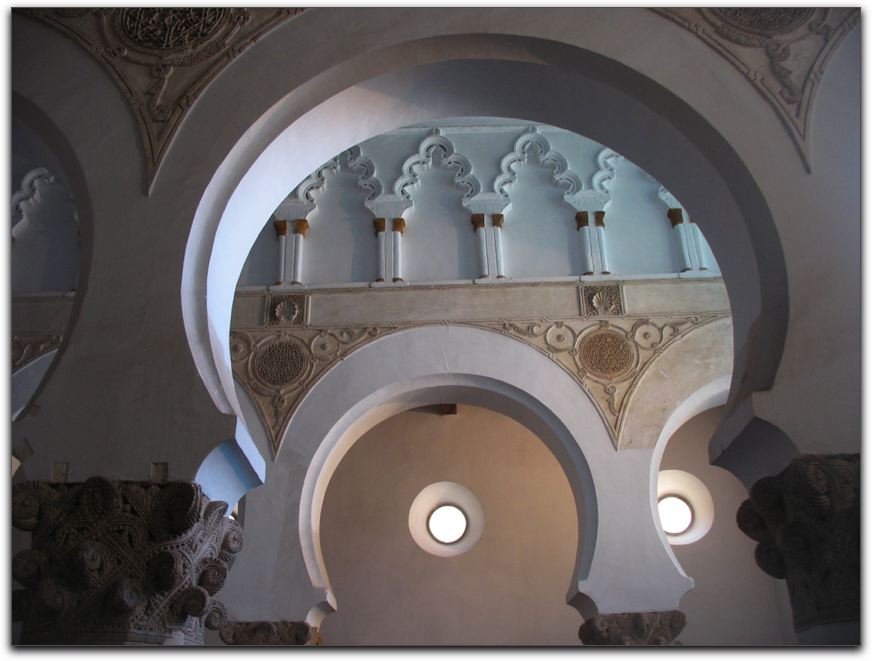
Almost next door is the much larger Transito Synagogue and its Museo Sefardi which we explored on our own. The more famous Transito looks large enough inside to hold nearly a thousand people. It is much darker and the decoration is busier. The Hebrew text on the cover of the Jane Gerber book we had been reading is excerpted from text that runs along the perimeter near the ceiling (which, though it is hard to tell from the photo here, is three dimensional).

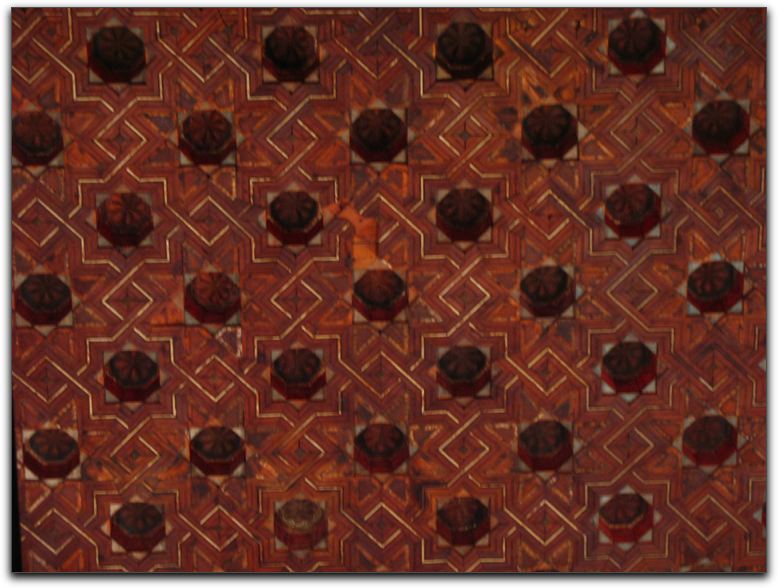
What looks like the central portion of the Toledo coat of arms appears on the wall of the synagogue.

It's not clear from what period that bit of plaster work originated. The full coat of arms also appears on the front window of the requisite Restaurante de la Judería

We have visited the Cardo in Jerusalem many times. The Cardo is an ancient marketplace that has been remade into a modern market (tourist shopping). We don't recall seeing ancient homes turned into a modern market as we found in Toledo. In this instance we entered what at one time had been an extensive home in the Judería. But now, nearly every available surface was turned over to displaying for sale the local ceramic works of all the styles that had been produced in the area since the house had been cleansed of its Jews.
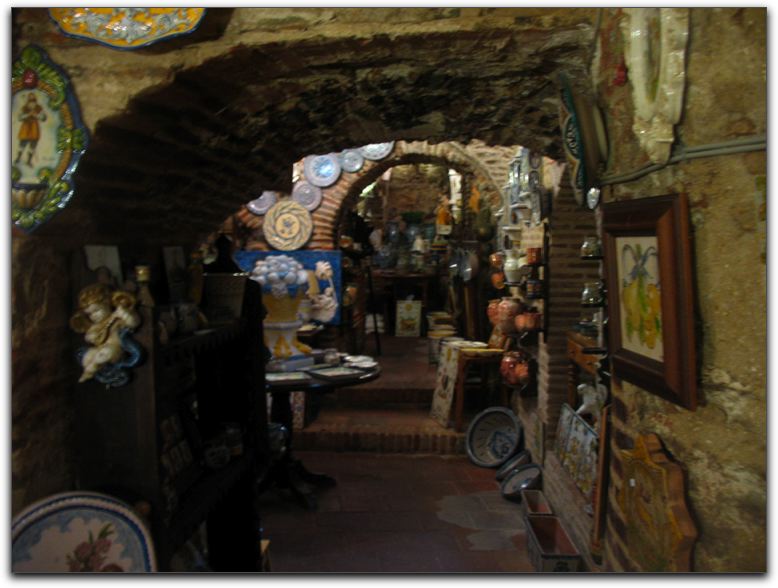
We walked across town making sure we saw the El Greco painting The Burial of the Count of Orgaz on our way to the Plaza Zocodover to rest.
As we wandered the narrow streets we noticed a sign that caught our attention.

In the hope that the various local sweets might contain chocolate we rang the bell of the convent. We were welcomed into an airy patio
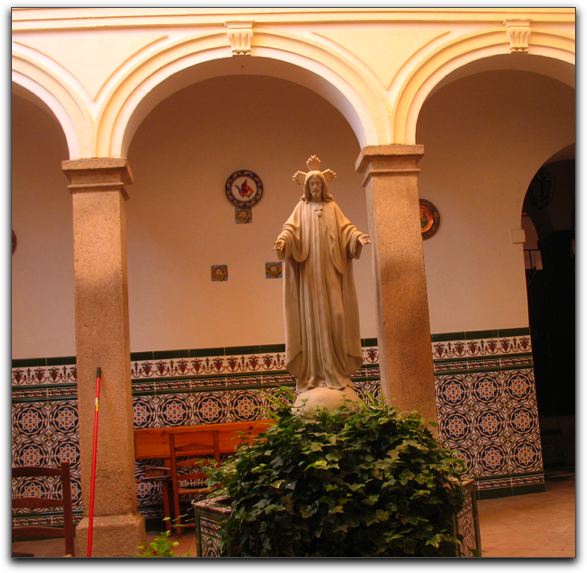
where the Augustinian Sister of the Immaculate Conception offered us the sweets for sale. Even though we were disappointed that they were not chocolate we bought and enjoyed the treat.
On our walk back to the Cathedral, Mark found a kindred spirit… someone who takes pictures of the stenciled graffiti we'd seen all over the country. In this case it was a European photographing Mary Poppins. Neither he nor Mark could figure out why she was painted on the wall. That looks like Huey P. Newton again down below.
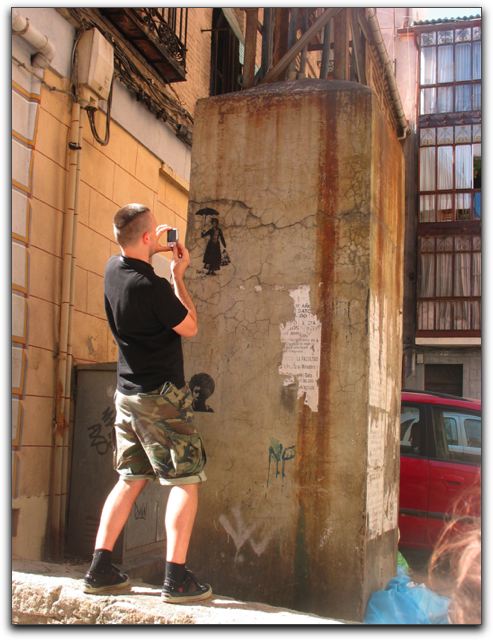
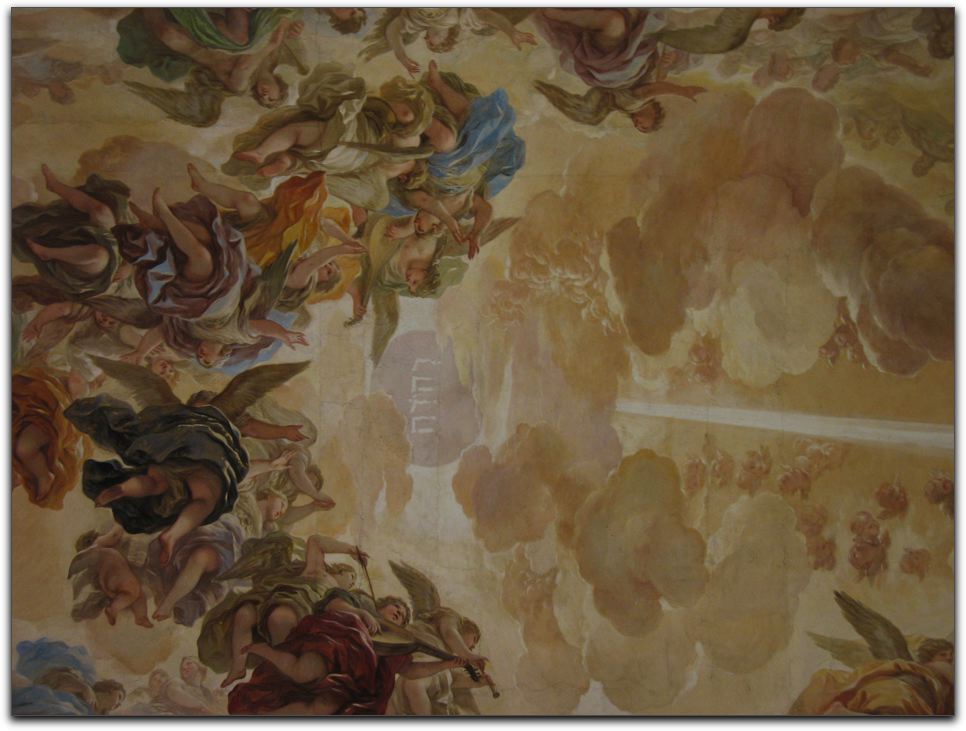
Our primary purpose in the Cathedral was to find this proclamation in Latin which was posted after 1992 on the 400th anniversary of the Expulsion.
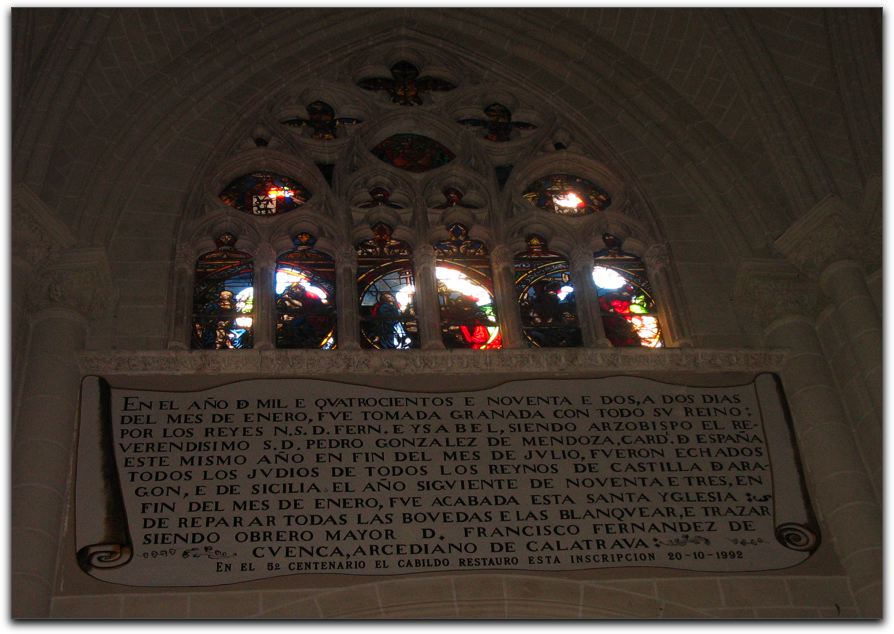
In English, it reads:
In the year one thousand four hundred and ninety-two, on the second of January, Granada was conquered along with the entire kingdom by the king and queen N.S.D., Ferdinand and Isabel. The Most Reverend Archbishop Pedro Gonzalez de Mendoza, was Cardinal of Spain. During the same year at the end of the month of July, all of the Jews in all parts of the kingdoms of Castille, Aragon and Sicily were expelled and during the following year of '93, at the end of the month of January, this sacred church was finished, repairing all of the vaults and whitewashing them. The designer being the great artist Don Francisco Fernández of Cuenca, the Archdeacon of Calatrava, the Lead Builder. At the 5th centennial anniversary, the Cabildo [Town Hall] restored this inscription, on 20-10-1992
While the original inscription mentions the expulsion, the restored inscription could have made some statement of apology, but did not.
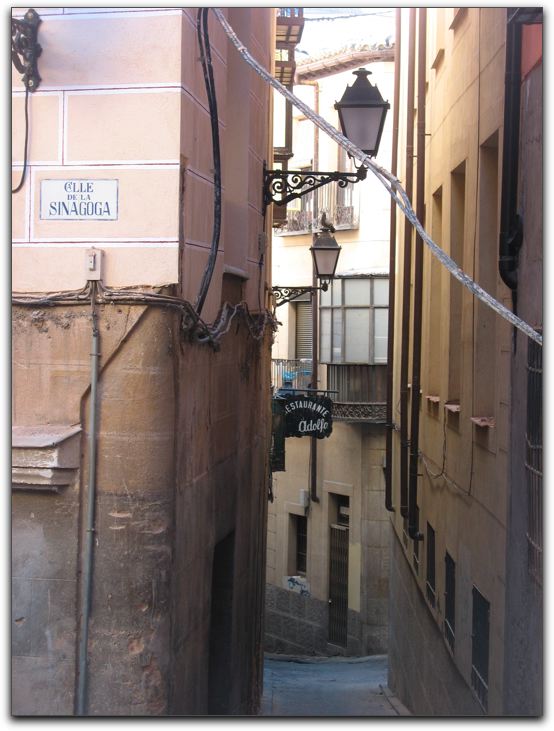
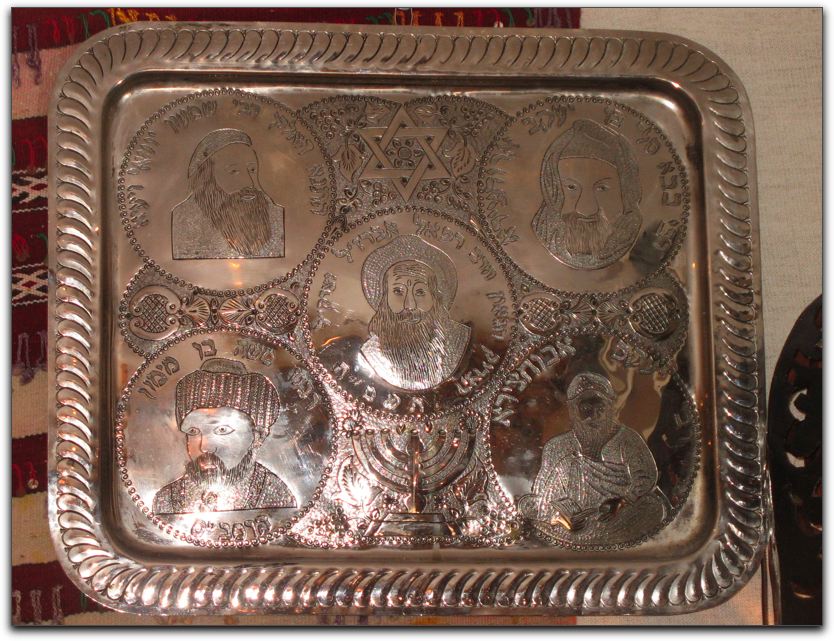
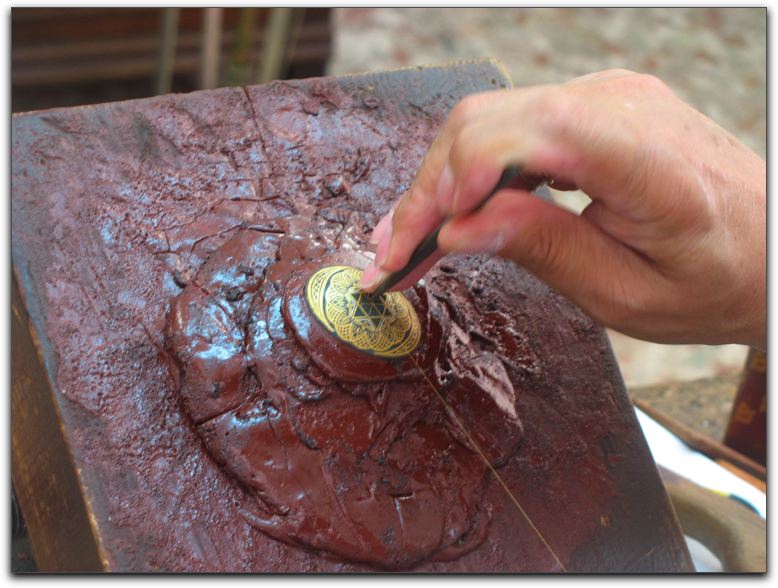
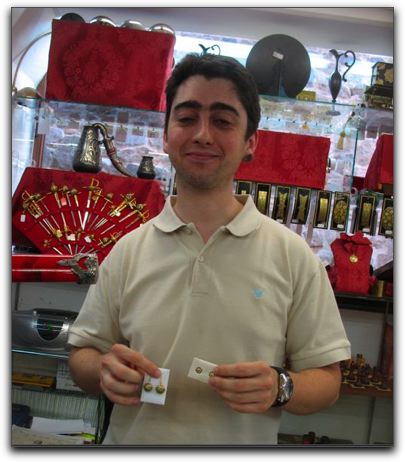
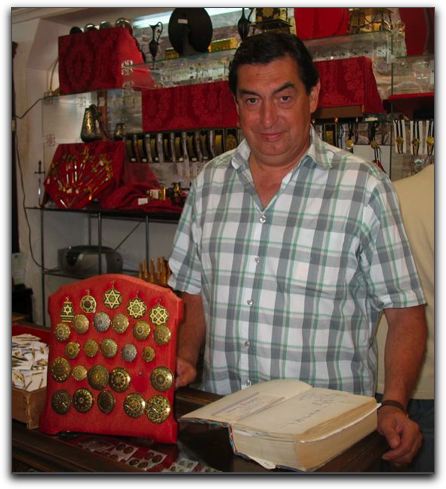
We had returned to a spot near the Transito Synagogue where the El Greco museum had been, once the site of the home of the royal treasurer of Pedro the Cruel: Samuel Levy, who had financed the building of the synagogue.

The plaque reads:
Legends from Toledo“The treasure of Samuel Levi”
Samuel Levy, treasurer of the King, who preferred to die under torture rather than confess where he was hiding his wealth.
We continued to see signs of tension in the posters along the street as we returned to the bridge that brought us into the city. Two stickers on this sign: one somehow expressing something anti-Jewish (it is hard to make out) and the other commemorating the 70th anniversary of the failed electoral revolution.
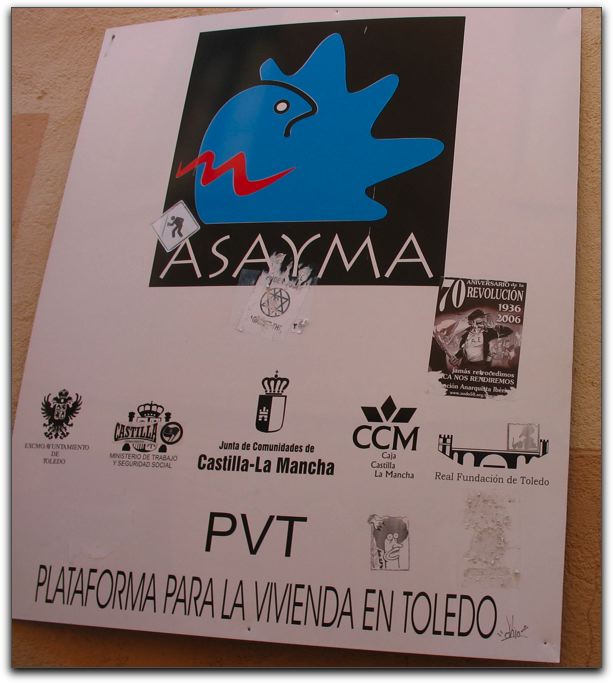
Another calling for the removal of religion from the schools.
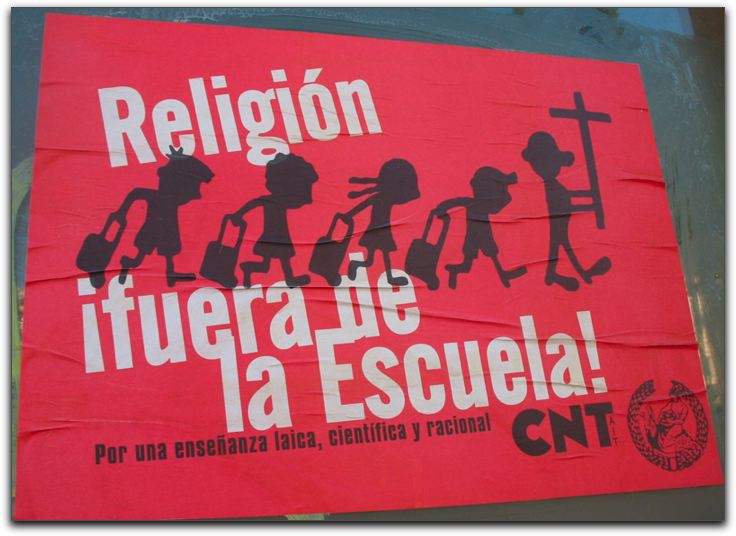
And a very strange one that seems to call for apostasy from the Roman Catholic Church, claiming that the church has stabbed Spain in the heart and causes it to bleed. This is a powerful image that reminded us of some of the anti-Israel posters from the Arab world that depict Israel as a dagger in the heart of the Arab realm.
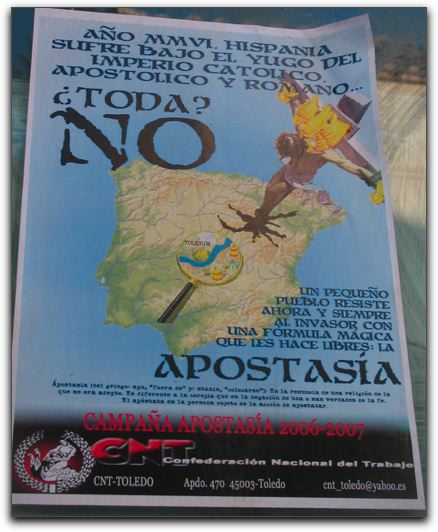
From the other side of the bridge we could look back on a very strange but beautiful city.
